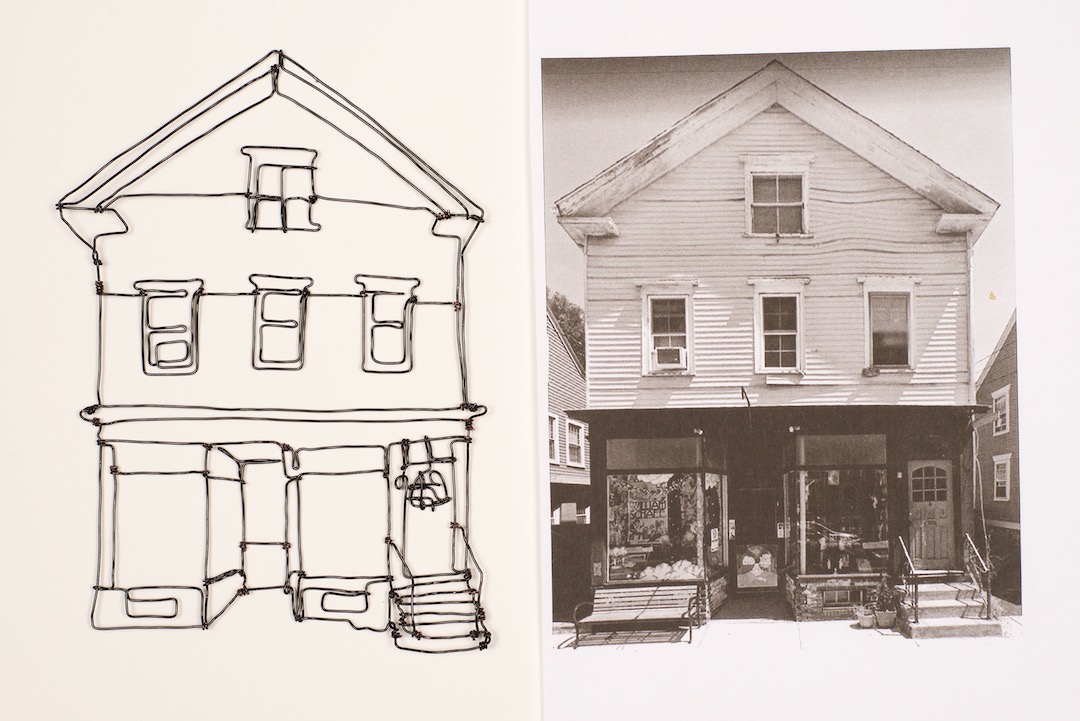
Photo by Pamela Murray
|
We all have places where we have been, where we want to be, and where we are right now. A place can cement memories, bring us comfort, and instill hope. In this project, you will create a line drawing with wire of a place from your past, present, or future that represents a moment of you. NOTE: This activity requires scissors and wire which can be sharp. |
Todos tenemos lugares en los que hemos estado, en los que queremos estar y en los que nos encontramos ahora mismo. Un lugar puede consolidar recuerdos, brindar consuelo e infundir esperanza. En este proyecto, crearás un dibujo lineal con alambre de un lugar del pasado, el presente o el futuro que represente un momento de tu vida. NOTA: Esta actividad requiere el uso de tijeras y alambre que pueden ser afilados. |
Materials / Materiales:
Instructions / Instrucciones:
|
1. Choose a photo of a house or building that has been a part of your life. Print out or copy the photo in the exact size you want your wire drawing to be. (The wire will scratch the surface of your photo, so don’t use a copy that you want to keep.) You can also draw the house or building on a piece of paper roughly 5” × 7”. |
1. Elige una fotografía de una casa o de un edificio que haya sido parte de tu vida. Imprime o fotocopia la fotografía en el mismo tamaño que deseas usar para el dibujo. (El alambre raspará la superficie de la fotografía, así que no uses una copia que quieras conservar.) También puedes dibujar la casa o el edificio en un papel de alrededor de 5” × 7” (13 × 18 cm). |
|
|
|
|
2. Outline the building with wire. Leaving an extra inch of wire at the start, begin in the lower right corner and trace around the structure. (You’ll use the extra inch of wire at the start for wrapping after getting all the way around.) |
2. Traza el contorno del edificio con alambre. Dejando una pulgada adicional de alambre al inicio, comienza en la esquina inferior derecha y traza el contorno de la estructura. (Usarás la pulgada adicional de alambre del inicio para cerrar después de dar toda la vuelta.) |
|
|
|
|
3. Outline the interior details. This can be done separately and then added to the whole piece (be sure to leave extra wire at the ends you want to attach) or worked from the same wire used for the building outline. |
3. Traza el contorno de los detalles del interior. Esto puedes hacerlo por separado y luego agregarlo a la pieza entera (asegúrate de dejar alambre adicional en los extremos que deseas unir) o con el mismo alambre que has utilizado para el contorno del edificio. |
|
|
|
|
4. Optional: Make a backing by outlining the building again but add a folded tab of about ¾ of an inch every 1 ½ inches or so. You will then fold these tabs around your first outline from the back to give your wire drawing more structure. |
4. Opcional: Para crear un apoyo, vuelve a trazar el contorno del edificio, pero agrega una pestaña doblada de alrededor de ¾ de pulgada (2 cm) cada 1 ½ pulgadas (4 cm) aproximadamente. Luego, dobla estas pestañas por detrás del primer contorno para darle más estructura al dibujo lineal. |
|
|
|
5. Use a marker or paint that matches the color of your wire to cover up the spots where the plastic coating has scratched off. |
5. Con un marcador o con pintura que sea del color del alambre, cubre los lugares donde se haya raspado el revestimiento plástico. |
|
Tips:
|
Consejos:
|
|
CW Roelle draws three-dimensional line drawings with wire. His images are studies of moods, thoughts, life, place, shape, and line. A graduate of the Maryland Institute College of Art and a MacColl Johnson Fellow, he lives and works in western Rhode Island. |
CW Roelle crea dibujos lineales tridimensionales con alambre. Sus imágenes son estudios de estados de ánimo, pensamientos, vidas, lugares, formas y líneas. Graduado en el Maryland Institute College of Art y destinatario de la beca MacColl Johnson, vive y trabaja en el oeste de Rhode Island. |
|
Share your artwork on social media with #ICAartlab |
Comparte tu obra de arte en las redes sociales con #ICAartlab
|